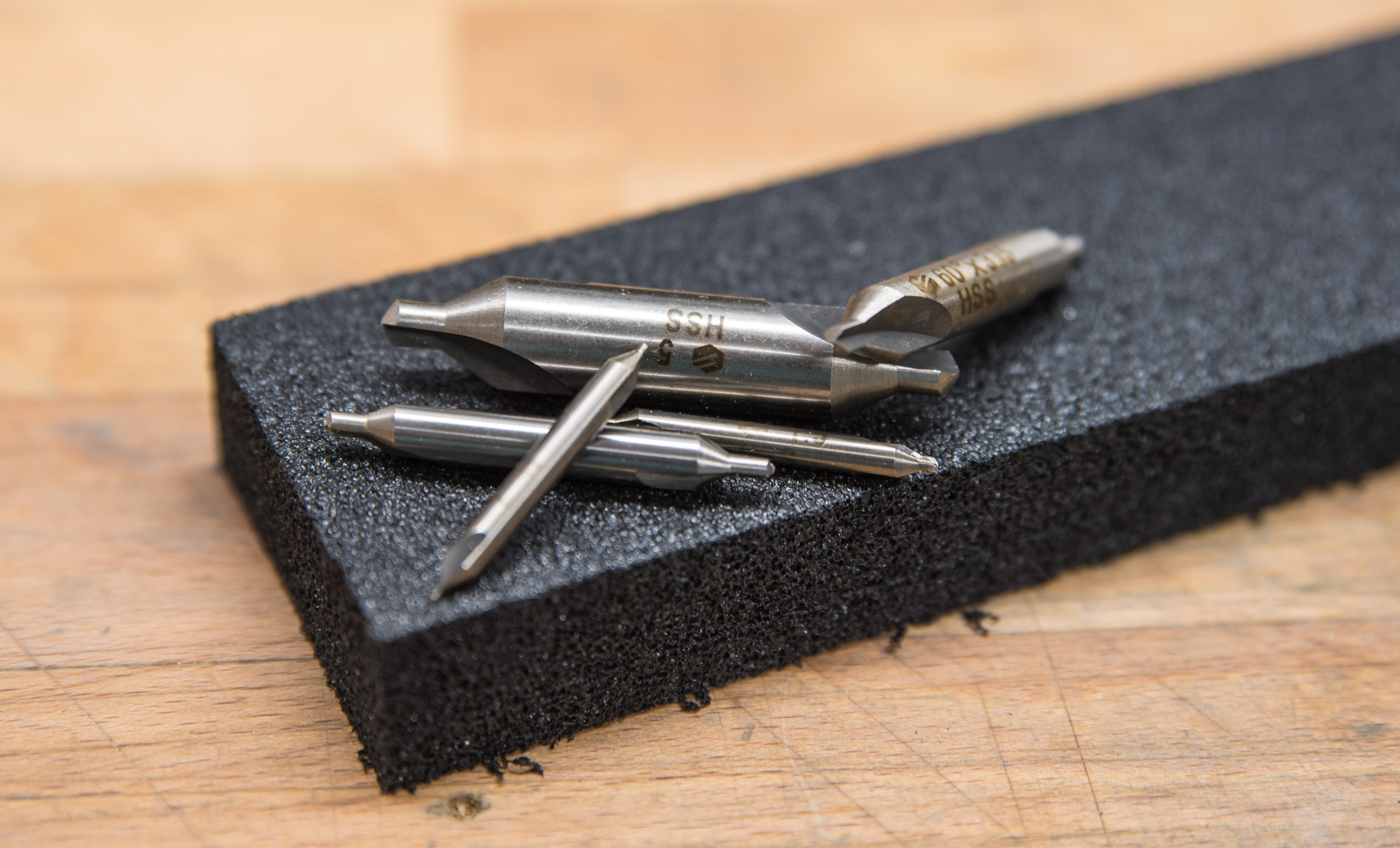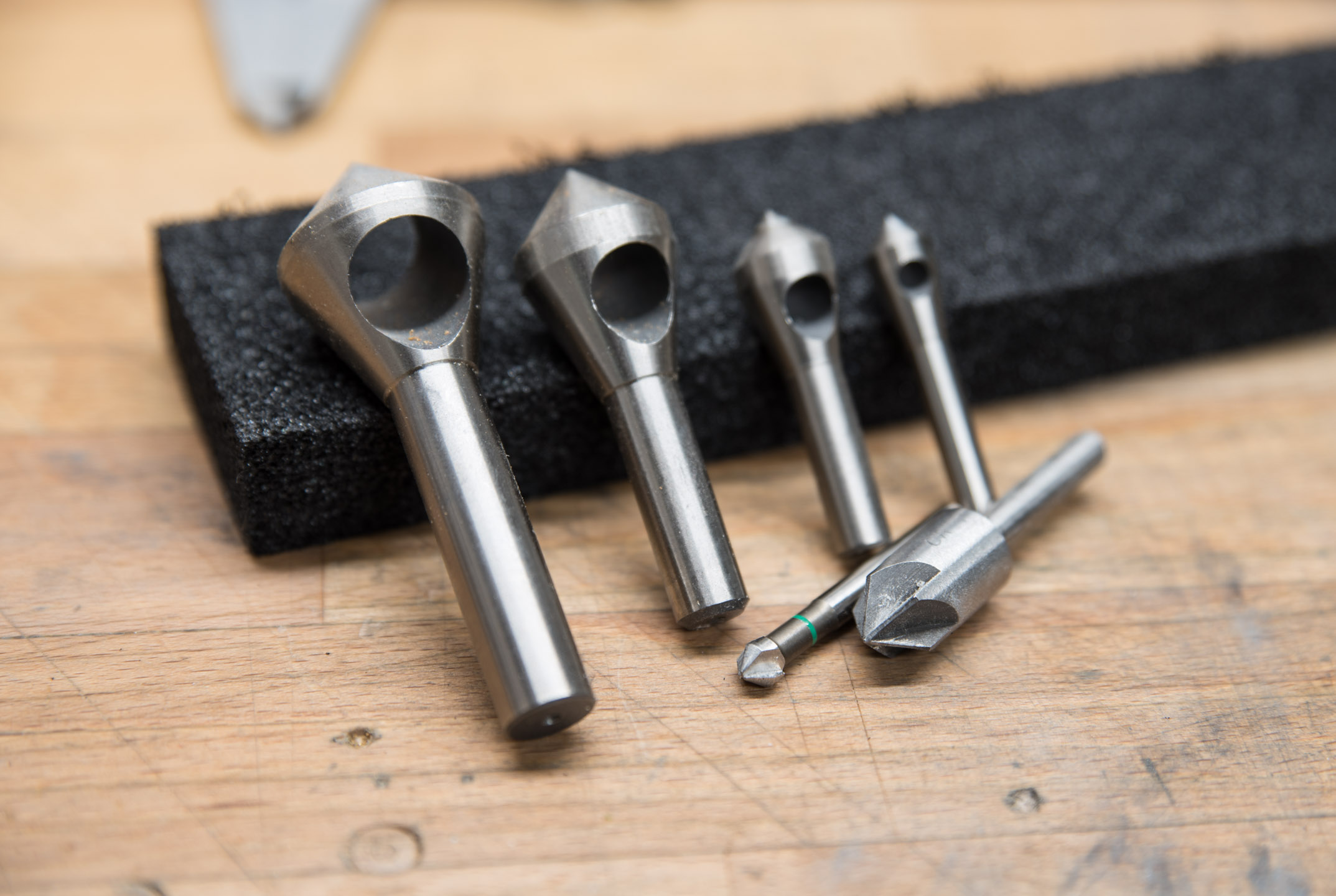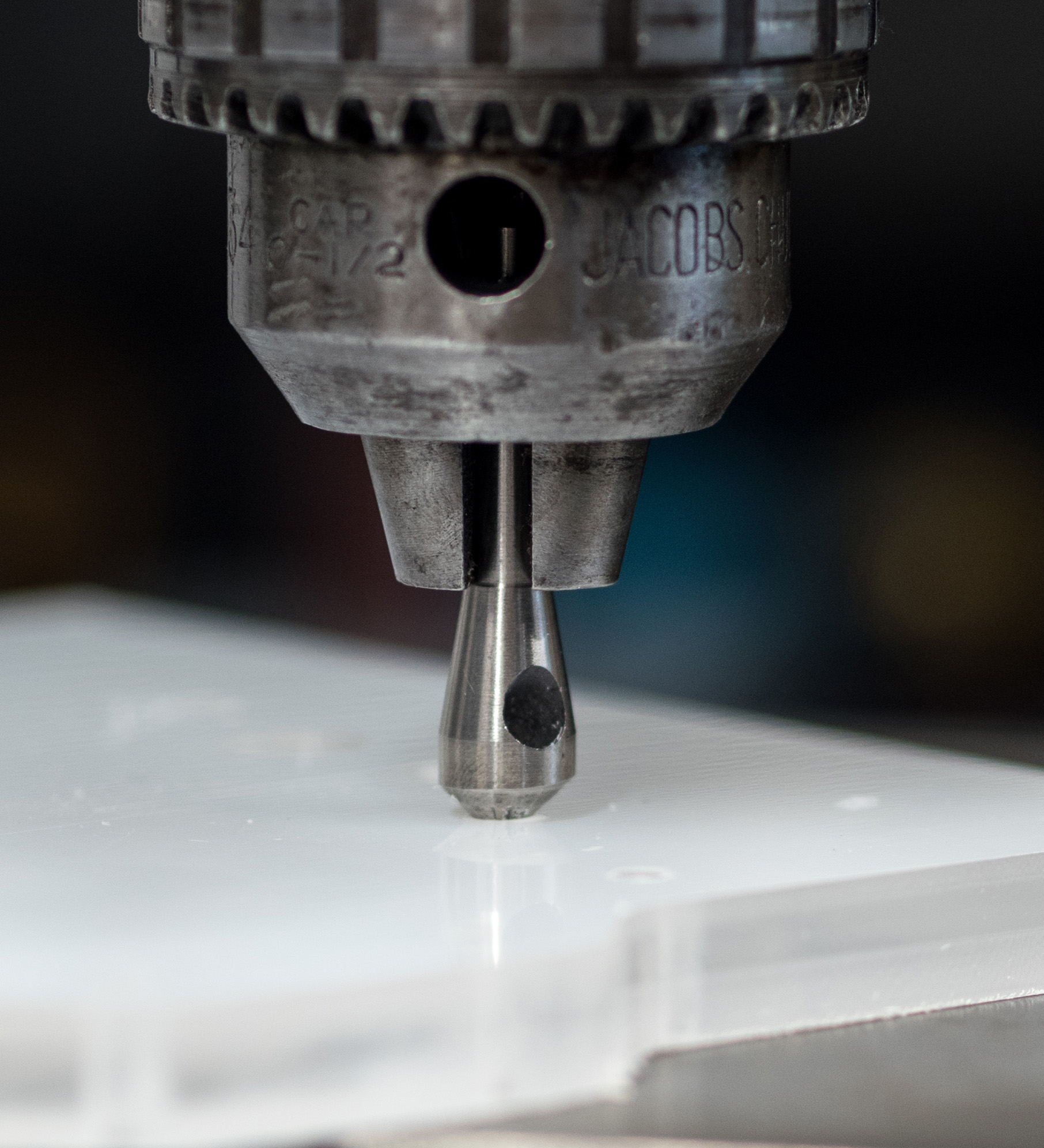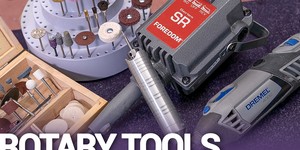Whilst twist drills may be the most versatile bunch, there are plenty of other varieties that are very interesting and useful. We'll start off by having a quick look at quite an underrated kind: centre drills.
Centre Drills

These are fairly self-explanatory. They're used for starting a hole so that later bits will line up nice and true with your marking out. Their role crosses over a bit with centre-punching on flat sheet, but if working with rod stock on a lathe, for instance, they are vital.
Centre drills feature a wide shank with a comparatively small and short cutting head. This helps prevent the bit from wandering around on the material, as they're sturdy and not flexible. If I need maximum precision even on sheet stock, I will sometimes first centre-punch and then start the hole with a centre drill. This ensures that the later twist drills will stay true, and the hole will end up exactly where it was intended. This is significantly more important for plastic and metal, as wood bits usually are self-centring, meaning the centre hole won't really do anything additional.


Whilst perhaps not always essential, I would wholeheartedly recommend picking up a set, as they're usually not expensive. You can save yourself a whole lot of headache where you have to make that perfectly centred hole and you've only got one chance.
Countersinking Bits

Countersinks are an essential tool for finishing in my opinion. They allow you to achieve a lovely flush finish with screws and can often become an aesthetic feature on their own sake thanks to the way the edges catch the light.
Conveniently, even high quality countersinks generally aren't that expensive, and it really pays off getting some good ones. A sharp bit will leave behind holes with smooth walls and even up to a polished appearance in metals and plastics. A dull bit, however, aside from not leaving a lovely finish, will have a tendency to push into the material rather than cut it. This becomes very apparent in materials like sheet aluminium: a high quality, sharp bit won't leave an impression on the opposite side to the cutting, whereas a dull bit will cause it to bulge.

You'll also notice there's quite an array of models on show. These all have various pros/cons, many of which I'm still trying to work out for myself also. I primarily use two varieties, a five-fluted one that I use for M3 and smaller holes and the larger ones with an offset hole which acts as the cutting edge. I've had good success with both varieties, although the five-fluted one is a higher quality bit, which shows when cutting sticky aluminium.



MSI MPG Velox 100R Chassis Review
October 14 2021 | 15:04








Want to comment? Please log in.